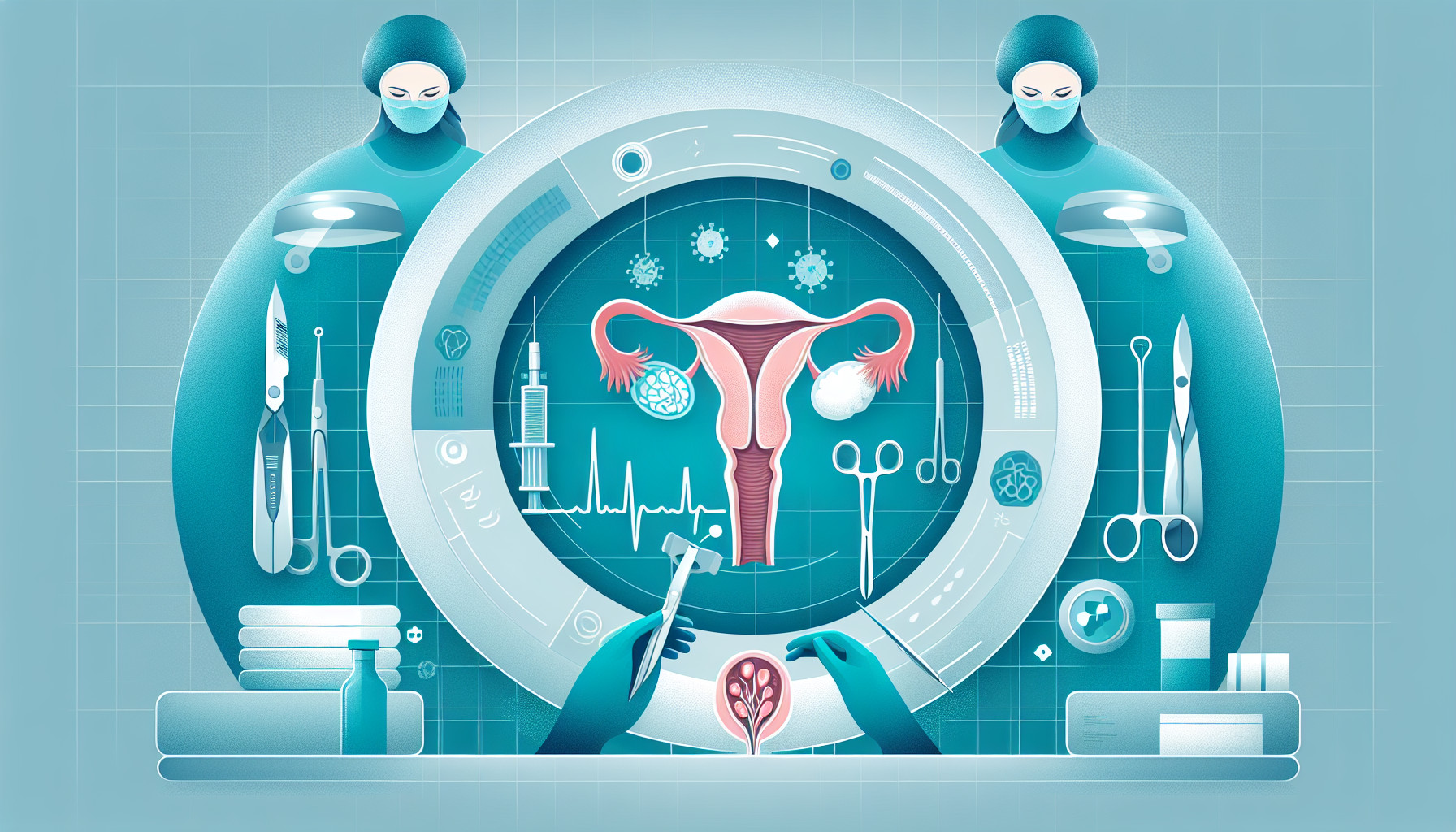Our Summary
This study focuses on a procedure to remove a specific type of cyst found in some women who have previously had surgery in the abdominal or pelvic area. The cyst is located in a tricky area, so knowing the layout of the lower abdomen and pelvis is crucial for successful surgery. The surgery involves a laparoscope, a type of small camera that allows surgeons to see inside the body and perform surgery without making large incisions. The study also provides insight into some specific techniques that can make the surgery safer and more effective. This includes tying off a certain ligament early in the procedure and making sure to remove all ovarian tissue to prevent any remnants. The study is particularly relevant to women who have kept their ovaries during a hysterectomy, as these women may need further surgery to address these cysts.
FAQs
- What type of cyst is the study focused on removing?
- What techniques does the study suggest to make the ovarian cyst removal safer and more effective?
- Is this study relevant to women who have had a hysterectomy but kept their ovaries?
Doctor’s Tip
One helpful tip a doctor might tell a patient about ovarian cyst removal is to follow post-operative care instructions closely to ensure a smooth recovery. This may include taking prescribed pain medication, avoiding strenuous activities, and attending follow-up appointments with your doctor. It’s also important to report any unusual symptoms, such as severe pain, fever, or heavy bleeding, to your healthcare provider immediately. By following these guidelines, you can help ensure a successful recovery and minimize the risk of complications.
Suitable For
Patients who are typically recommended for ovarian cyst removal include:
- Women who have previously had surgery in the abdominal or pelvic area and have developed cysts in the ovaries as a result.
- Women with large cysts that are causing symptoms such as pelvic pain, bloating, or difficulty urinating.
- Women with cysts that are suspected to be cancerous or have the potential to become cancerous.
- Women with recurrent cysts that have not responded to conservative treatment options.
- Women who have kept their ovaries during a hysterectomy and have developed cysts in the remaining ovarian tissue.
Timeline
Before ovarian cyst removal:
- Patient may experience symptoms such as pelvic pain, bloating, and abnormal menstrual cycles.
- Patient undergoes diagnostic tests such as ultrasound or MRI to confirm the presence of an ovarian cyst.
- Patient consults with a gynecologist or specialist to discuss treatment options, including the possibility of surgery.
- Surgery is scheduled, and the patient may be required to undergo pre-operative preparations such as fasting and medication adjustments.
After ovarian cyst removal:
- Patient undergoes laparoscopic surgery to remove the ovarian cyst.
- Patient may experience some pain and discomfort post-surgery, which can be managed with pain medication.
- Patient is monitored in the hospital for a few hours to ensure there are no complications.
- Patient is discharged from the hospital and given instructions for at-home care, including rest, wound care, and follow-up appointments.
- Patient may experience some side effects such as temporary changes in bowel habits or bloating.
- Patient follows up with their healthcare provider for a post-operative check-up and to discuss any ongoing symptoms or concerns.
What to Ask Your Doctor
What type of ovarian cyst do I have and what are the potential risks or complications associated with it?
What are the benefits of removing the ovarian cyst through laparoscopic surgery compared to other surgical methods?
How experienced are you in performing laparoscopic ovarian cyst removal procedures?
What is the success rate of this surgery in terms of completely removing the cyst and preventing it from recurring?
What is the recovery process like after laparoscopic ovarian cyst removal and how long will it take for me to fully recover?
Will removing the ovarian cyst affect my fertility or hormone levels?
Are there any specific precautions or lifestyle changes I should make before or after the surgery to improve the outcome?
What are the potential risks or complications associated with the laparoscopic ovarian cyst removal procedure?
Will I need any follow-up appointments or tests after the surgery to monitor my recovery and the health of my ovaries?
Are there any alternative treatments or options available for managing the ovarian cyst, other than surgical removal?
Reference
Authors: Muir TM, Chao L. Journal: J Minim Invasive Gynecol. 2023 Aug;30(8):615. doi: 10.1016/j.jmig.2023.05.011. Epub 2023 May 26. PMID: 37245674
